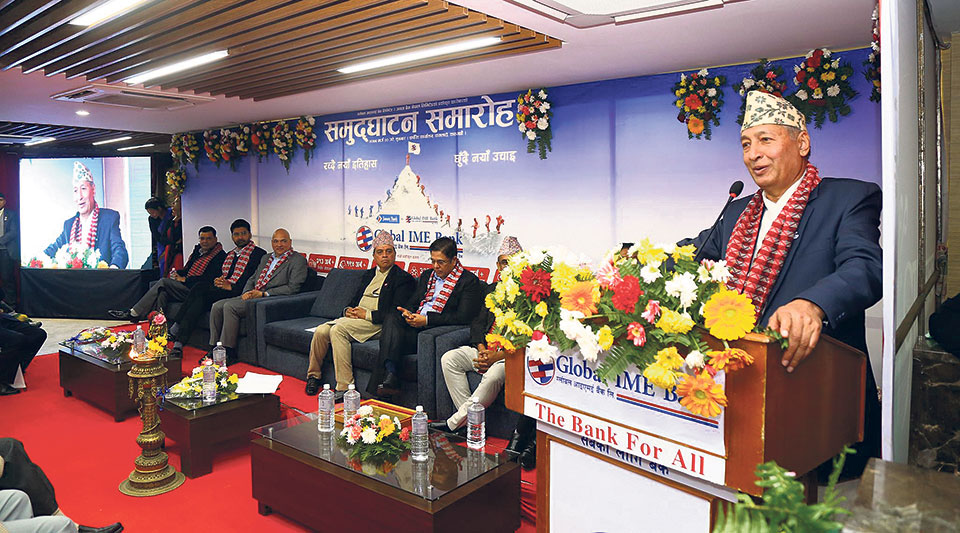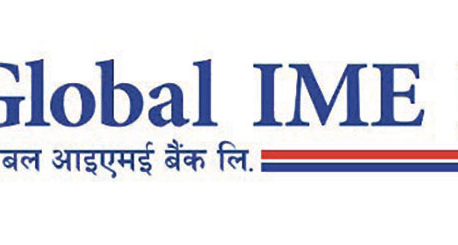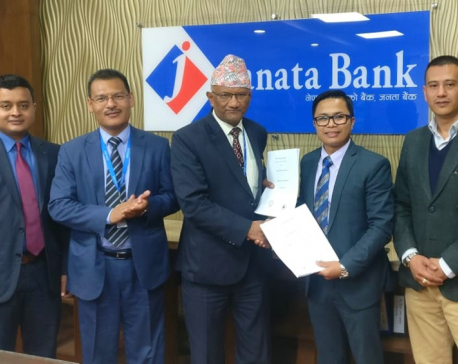
OR
What Global IME Bank’s big merger may mean for other banks
Published On: December 7, 2019 08:05 AM NPT By: Sagar Ghimire | @sagarghi

KATHMANDU, Dec 7: After completing the process of merger with Janata Bank Ltd, Global IME Bank Ltd has emerged as the biggest bank in terms of key financial indicators including capital, deposits and assets (loans).
The biggest merger in the banking sector, which began five months ago, is likely to put pressure on other commercial banks to seek merger partners also. While most banks have already submitted written commitments for merger to Nepal Rastra Bank (NRB), they have not made any breakthrough in finding a partner.
Earlier in June, NRB had sought merger commitments from banks. The monetary policy for the current fiscal year 2019/20 introduced a number of incentives, such as relaxation of the interest rate spread cap for those pursuing mergers. None of these banks has been able to make any progress in going for a merger other than a commitment to do so if they find a right partner.
However, the merger of Global IME Bank with Janata Bank will give an impetus to the central bank’s consolidation initiative. Other commercial banks will be under merger pressure not only from the central bank but also from the market as they will have to compete with an enlarged institution with wider capabilities.
NRB officials are also upbeat over the mega merger which, they believe, would make their own work easier.
“The integration of these two institutions is a milestone in the consolidation process of the banking sector as those banks that cannot withstand the pressure of market competition must now find a partner for merger,” said Laxmi Prapanna Niraula, an executive director at NRB.
“Either you enhance your capacity to face the competition or shut down,” he said. For some experts, this merger could reshape the dynamics of the banking industry.
The bigger players, particularly Nepal Investment Bank Ltd (NIBL) and Nabil Bank Ltd, will face a challenge maintaining profitability while competing with Global IME Bank, which has now risen to their level. For other ‘small banks’, the challenge will be one of ‘survival’.
“Smaller banks will have to increase their size and their capital to compete in a market dominated by bigger banks,” said Anal Raj Bhattarai, a former banking executive.
While terming the merger of Global IME and Janata Bank as very positive, Nabil Bank Ltd CEO Anil Keshary Shah said it calls for introspection by other commercial banks.
“The merger has a potential to change the landscape of the banking industry. Now, it's up to the rest of the us whether we want to be what we are or compete with bigger banks,” said Shah, who is also a former president of Nepal Bankers Association.
“However, being big, new or old are not the only benchmarks. All banks have their own characteristics. Those who want to grow organic may not go for mergers while others may. Both are right in their own way,” he added.
You May Like This

Milestone in Mergers
Global IME Bank Limited started its integrated operation on Friday after the successful merger with Janata Bank Limited. This biggest... Read More...

Global IME Bank to release SME loans within three days
KATHMANDU, Aug 26: To facilitate loan processing for small and medium enterprises (SMEs), Global IME Bank has come up with... Read More...

Partner bank agreement between IME Digital and Janata Bank
KATHMANDU, Jan 2: IME Digital and Janata Bank have inked an agreement to facilitate customers to avail various mobile financial... Read More...

Just In
- World Malaria Day: Foreign returnees more susceptible to the vector-borne disease
- MoEST seeks EC’s help in identifying teachers linked to political parties
- 70 community and national forests affected by fire in Parbat till Wednesday
- NEPSE loses 3.24 points, while daily turnover inclines to Rs 2.36 billion
- Pak Embassy awards scholarships to 180 Nepali students
- President Paudel approves mobilization of army personnel for by-elections security
- Bhajang and Ilam by-elections: 69 polling stations classified as ‘highly sensitive’
- Karnali CM Kandel secures vote of confidence


















Leave A Comment